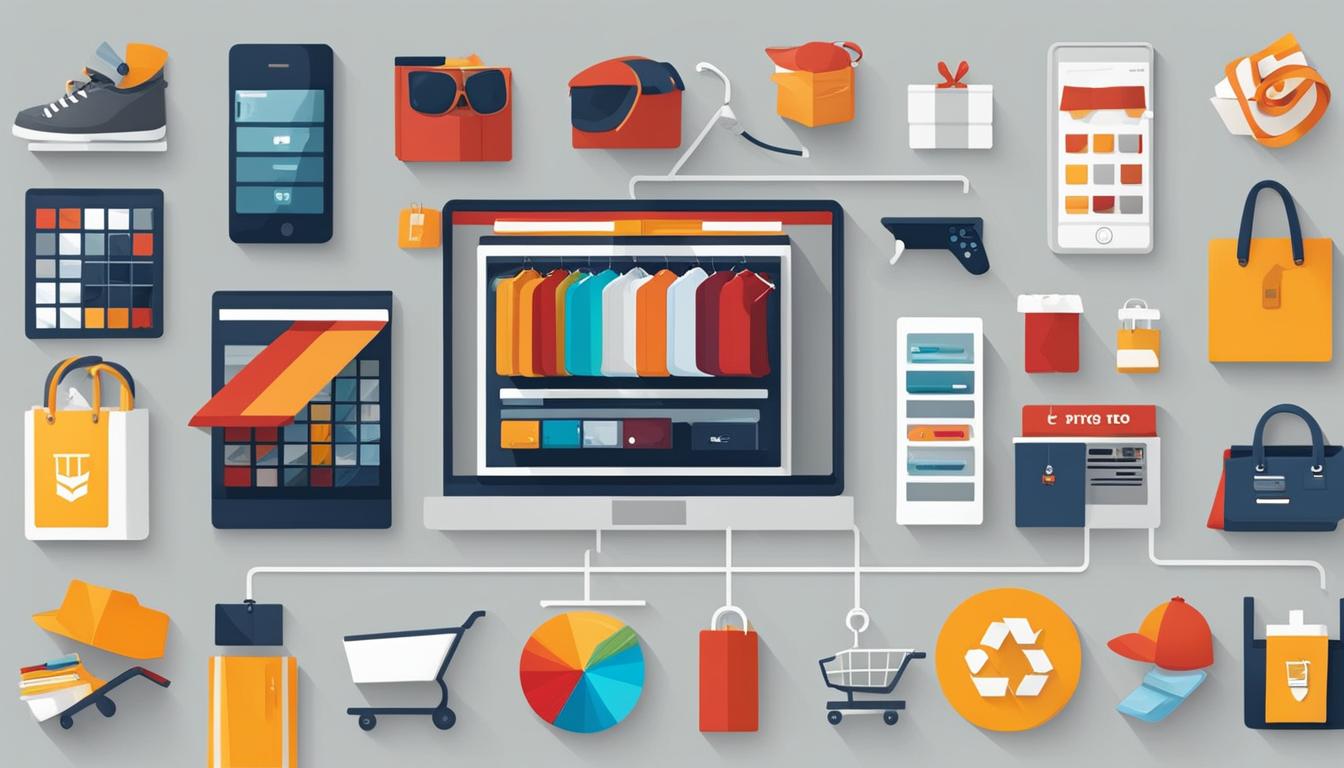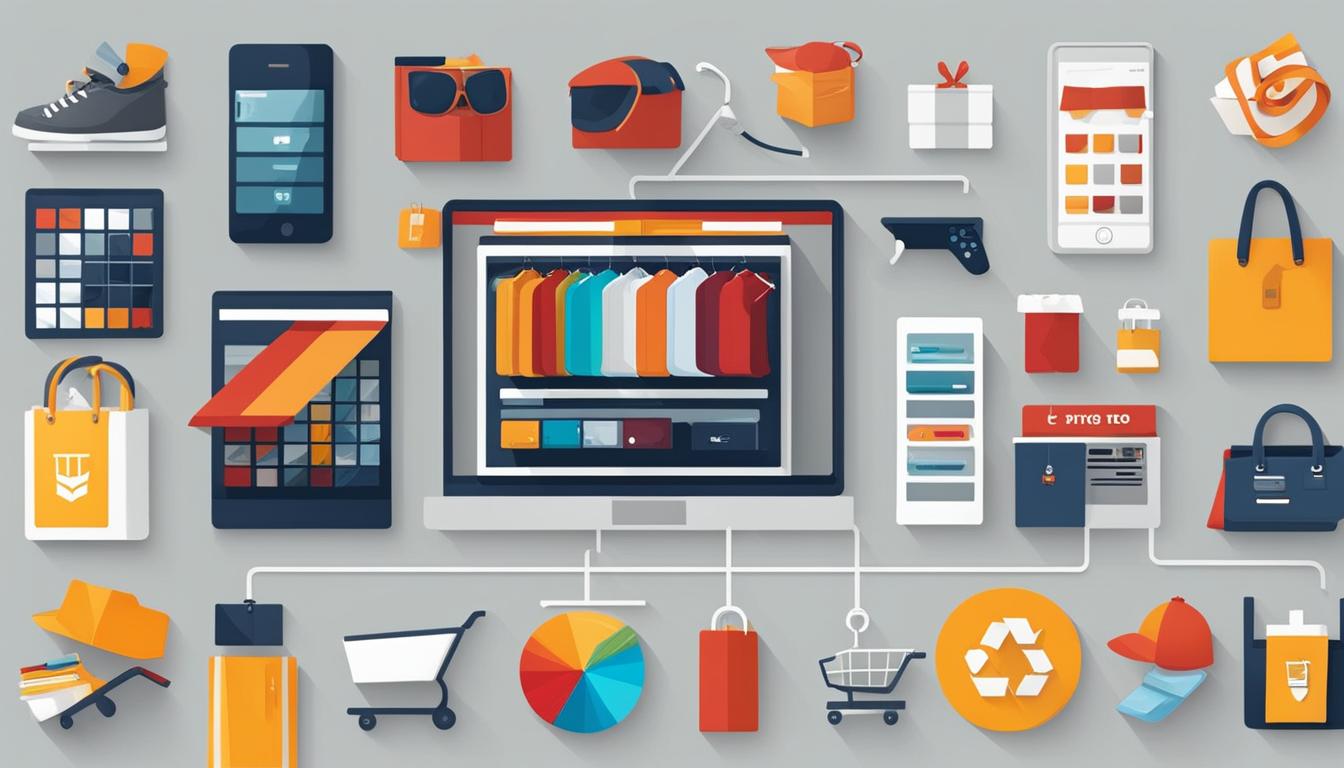Customer Lifetime Value (CLV) is a crucial metric that is often overlooked in the world of e-commerce. It refers to the total value a customer brings to your business over their lifetime, considering all their purchases, loyalty, and satisfaction. Despite its significance, many marketers are unaware of the term and its implications. However, understanding and prioritizing CLV can have a profound impact on your online success. In this guide, we will explore what CLV is, why it is important, and strategies for maximizing its potential.
Key Takeaways:
- Customer Lifetime Value (CLV) is the total value a customer brings to your e-commerce business over their lifetime.
- Understanding CLV is crucial for measuring the impact of marketing strategies and allocating financial resources effectively.
- By increasing CLV, you can boost customer retention, revenue, and long-term business growth.
- Strategies for increasing CLV include implementing customer loyalty programs, upselling and cross-selling techniques, providing excellent customer service, creating valuable content, leveraging user-generated content, and implementing data-driven marketing strategies.
- Prioritizing CLV is essential for creating a sustainable and thriving e-commerce business.
What is Customer Lifetime Value?
Customer Lifetime Value (CLV), also known as LTV, is a metric that measures the total value a customer brings to your e-commerce business over their lifetime. It takes into account all their purchases, from their first transaction to their most recent one. CLV is a valuable tool for understanding customer behavior and satisfaction.
CLV helps businesses quantify the financial impact of their customers’ repeat purchases. By analyzing CLV, you can gain insights into the effectiveness of your sales and marketing strategies, as well as identify any areas for improvement. The metric is a reflection of the level of customer loyalty and satisfaction, as repeat purchases indicate a positive customer experience.
To calculate CLV, you can use a simple formula: average purchase value multiplied by purchase frequency, multiplied by customer lifespan. This metric can be further refined by factoring in customer acquisition cost and profit margin. By understanding your CLV, you can make informed decisions to maximize sales and profitability.
| CLV Components | Formula |
|---|---|
| Average Purchase Value | Total Revenue / Total Number of Purchases |
| Purchase Frequency | Total Number of Purchases / Total Number of Customers |
| Customer Lifespan | Average Number of Years a Customer Remains Active |
Why is Customer Lifetime Value Important?
Understanding your Customer Lifetime Value (CLV) is crucial for several reasons. Firstly, it helps you measure the impacts of your marketing strategy. By analyzing CLV, you can identify which marketing efforts are driving more sales, reducing churn, and increasing customer lifespan. This knowledge allows you to optimize your marketing resources and allocate them effectively, resulting in a better return on investment (ROI).
Secondly, CLV plays a significant role in financial resource allocation. By having a clear understanding of your CLV, you can make smarter decisions about your business goals and financial planning. You can prioritize investments that will improve CLV and focus on strategies that will bring long-term value to your customers.
Furthermore, CLV is instrumental in improving customer retention. By analyzing CLV, you can identify areas for improvement and implement targeted strategies to increase customer loyalty. Understanding CLV helps you uncover your most profitable customers, allowing you to create personalized marketing campaigns and focus on acquiring new customers with similar profiles.
Table: Importance of Customer Lifetime Value
| Impacts of Marketing Strategy | Financial Resource Allocation | Customer Retention | Most Profitable Customers |
|---|---|---|---|
| Identify effective marketing efforts | Optimize resource allocation | Implement strategies for customer loyalty | Create targeted marketing campaigns |
| Reduce churn and increase customer lifespan | Make smarter decisions for business goals | Increase customer satisfaction and loyalty | Focus on acquiring similar customers |
| Improve ROI and marketing effectiveness | Improve financial planning and budgeting | Enhance customer experience and engagement | Increase revenue and profitability |
In conclusion, understanding and prioritizing Customer Lifetime Value in e-commerce is essential for optimizing marketing strategies, allocating resources effectively, improving customer retention, and focusing on your most profitable customers. By analyzing CLV, businesses can make data-driven decisions that contribute to long-term success and sustainable growth.
How Does LTV Impact Revenue?
Customer Lifetime Value (LTV) plays a crucial role in impacting revenue for e-commerce businesses. As LTV increases, the average amount each customer spends also increases, resulting in higher revenue. Return customers, in particular, contribute significantly to revenue growth. Studies indicate that businesses have a 60-70% higher success rate in selling to existing customers compared to acquiring new ones. This highlights the importance of customer retention and increasing LTV.
When customers have a higher LTV, it signifies that they are making repeat purchases, indicating satisfaction and loyalty towards the brand. By focusing on increasing LTV through strategies such as excellent customer service, personalized marketing campaigns, and loyalty programs, businesses can encourage customers to stay engaged and make additional purchases.
Customer retention is a key factor in driving higher revenue. By implementing retention strategies and ensuring a positive customer experience, businesses can foster loyalty and encourage customers to continue purchasing. This not only leads to increased revenue from these customers but also presents opportunities for upselling and cross-selling, further boosting the average customer spend and overall revenue.
| Impact of LTV on Revenue | Benefits |
|---|---|
| Higher LTV leads to increased customer spend | Increases revenue |
| Return customers are more likely to make repeat purchases | Drives higher revenue |
| Customer retention encourages upselling and cross-selling opportunities | Boosts average customer spend and overall revenue |
Increasing Revenue through LTV Optimization Strategies
To maximize revenue through LTV, businesses can implement various strategies:
- Implement a customer loyalty program to incentivize repeat purchases and increase customer retention.
- Utilize upselling and cross-selling techniques to encourage customers to spend more during each transaction.
- Provide excellent customer service to ensure customer satisfaction and foster long-term loyalty.
- Create compelling and valuable content to engage customers and drive repeat purchases.
- Leverage user-generated content to build trust and authenticity, encouraging customers to make additional purchases.
- Adopt data-driven marketing strategies to personalize customer interactions and improve customer retention.
By focusing on these strategies and consistently monitoring and optimizing LTV, e-commerce businesses can effectively impact revenue and achieve long-term growth.

How Does CLV Relate to CAC in E-commerce?
Customer Lifetime Value (CLV) is a crucial metric for e-commerce businesses, and it is closely related to Customer Acquisition Cost (CAC). CLV measures the total value a customer brings to your business over their lifetime, taking into account all their purchases and loyalty. On the other hand, CAC represents the total cost of acquiring a new customer. By understanding the relationship between CLV and CAC, you can gain insights into the financial implications of your e-commerce strategies.
One important way to assess the relationship between CLV and CAC is by calculating the LTV:CAC ratio. This ratio compares the lifetime value of a customer to the cost of acquiring them. The benchmark LTV:CAC ratio should ideally be 3:1, meaning that the revenue generated from each customer should be three times higher than the cost of acquisition. Monitoring this ratio helps ensure that your business is not losing money and that your marketing efforts are generating a positive return on investment.
Understanding the relationship between CLV and CAC is essential for making informed decisions about resource allocation and marketing strategies. If your CLV is significantly lower than your CAC, it indicates that your acquisition costs are too high or that your customer retention efforts are not effective. In this case, you may need to revisit your marketing tactics, improve customer retention strategies, or explore ways to increase customer loyalty and satisfaction.
Table: CLV vs. CAC Analysis
| Customer | CLV | CAC | LTV:CAC Ratio |
|---|---|---|---|
| Customer A | $500 | $200 | 2.5:1 |
| Customer B | $1000 | $300 | 3.3:1 |
| Customer C | $800 | $400 | 2:1 |
The table above showcases a CLV vs. CAC analysis for three hypothetical customers. Customer A has a CLV of $500 and a CAC of $200, resulting in an LTV:CAC ratio of 2.5:1. Customer B has a CLV of $1000 and a CAC of $300, resulting in a ratio of 3.3:1. Customer C has a CLV of $800 and a CAC of $400, resulting in a ratio of 2:1.
Based on this analysis, it is evident that Customer B provides the highest return on investment, with an LTV:CAC ratio that meets the benchmark of 3:1. On the other hand, Customer C has a lower ratio, indicating the need for improvement in either acquisition costs or customer lifetime value. By analyzing CLV and CAC in this way, you can make data-driven decisions to optimize your e-commerce strategies and maximize profitability.
What is a Good Customer Lifetime Value?
A good Customer Lifetime Value (CLV) for e-commerce businesses is typically three times higher than the Customer Acquisition Cost (CAC). This benchmark indicates that the revenue generated from each customer should be three times higher than the cost of acquiring that customer. Evaluating CLV is crucial to determining the financial health of your business and identifying areas for improvement.
To calculate your CLV benchmark, divide your total revenue from a particular customer by the number of purchases they have made. This will give you an average revenue per purchase. Multiply this average by the number of repeat purchases you expect the customer to make over their lifetime. The result will be your CLV benchmark.
For example, if a customer has made three purchases with an average revenue of $50 per purchase, and you expect them to make two more purchases in the future, their CLV benchmark would be $300 (3 x $50 x 2).
Table: CLV Benchmark Calculation
| Purchases | Average Revenue per Purchase | Expected Repeat Purchases | CLV Benchmark |
|---|---|---|---|
| 3 | $50 | 2 | $300 |
It’s important to note that the CLV benchmark can vary depending on your industry, target market, and business model. Some businesses may have higher CLV benchmarks due to factors such as higher average order values or longer customer lifetimes. However, aiming for a CLV that is at least three times higher than your CAC is a good starting point for most e-commerce businesses.
By focusing on strategies to increase your CLV and improve customer loyalty, you can enhance the financial success and growth of your e-commerce store.
How to Increase Customer Lifetime Value in E-commerce Stores
Boosting your Customer Lifetime Value (CLV) is crucial for the long-term success of your e-commerce store. By implementing effective strategies, you can increase customer loyalty, maximize revenue, and improve overall business performance. Here are some key tactics to increase your CLV:
Create a Customer Loyalty Program
Implementing a customer loyalty program can incentivize repeat purchases and foster long-term customer relationships. Offer rewards, discounts, or exclusive perks to customers who consistently engage with your brand. By making customers feel valued and appreciated, you can encourage them to continue purchasing from your store.
Utilize Upselling and Cross-selling Techniques
Upselling involves recommending higher-priced products or upgrades to customers, while cross-selling entails suggesting complementary or related items. By showcasing additional products that align with customers’ interests or needs, you can increase the average order value and boost revenue per transaction.
Provide Excellent Customer Service
Delivering exceptional customer service is essential for building trust and loyalty. Aim to exceed expectations at every touchpoint, whether it’s addressing inquiries promptly, resolving issues efficiently, or going the extra mile to ensure customer satisfaction. Happy customers are more likely to make repeat purchases and become advocates for your brand.
Create and Promote Valuable Content
Invest in content creation that educates and engages your target audience. By providing valuable information or entertainment through blog posts, videos, or social media content, you can establish your brand as an authority in your industry and build a community of loyal followers. This content can also drive traffic to your e-commerce store and increase the chances of conversion.
Leverage User-Generated Content
User-generated content, such as customer reviews, testimonials, or social media posts, serves as social proof and builds trust among potential customers. Encourage your satisfied customers to share their experiences by offering incentives or featuring their content on your website or social media platforms. This authentic content can influence purchasing decisions and increase customer loyalty.
Implement Data-Driven Marketing Strategies
Utilize data analytics and customer insights to personalize your marketing efforts. By understanding customer preferences, behaviors, and purchase patterns, you can tailor your messaging, offers, and recommendations to individual customers. Data-driven marketing enables you to deliver targeted and relevant experiences, increasing customer satisfaction and the likelihood of repeat purchases.
Conclusion
In conclusion, understanding the importance of Customer Lifetime Value (CLV) is crucial for the long-term growth and success of e-commerce businesses. CLV enables businesses to measure the impact of their marketing strategies, allocate resources effectively, and improve customer retention. By prioritizing CLV, businesses can unlock valuable insights into customer behavior and satisfaction.
To increase CLV, there are several strategies that e-commerce stores can implement. Creating customer loyalty programs, utilizing upselling and cross-selling techniques, providing excellent customer service, creating valuable content, leveraging user-generated content, and implementing data-driven marketing strategies are effective ways to boost customer lifetime value.
By implementing these strategies, businesses can achieve higher revenue, steady cash flow, and the acquisition of more target customers. Prioritizing CLV is essential for creating a sustainable and thriving e-commerce business in the long run.
FAQ
What is Customer Lifetime Value?
Customer Lifetime Value (CLV) is a metric that quantifies the total value of a customer to your e-commerce business based on their sales over time.
Why is Customer Lifetime Value Important?
Understanding CLV helps measure the impact of marketing strategies, allocate financial resources effectively, improve customer retention, and identify the most profitable customers.
How Does LTV Impact Revenue?
As customer lifetime value increases, the average amount each customer spends also increases, resulting in a boost in revenue for your business.
How Does CLV Relate to CAC in E-commerce?
CLV is closely related to customer acquisition cost (CAC), and understanding CLV helps determine the effectiveness of your CAC and ensure a positive return on investment.
What is a Good Customer Lifetime Value?
A good CLV for e-commerce businesses is typically three times higher than the Customer Acquisition Cost.
How to Increase Customer Lifetime Value in E-commerce Stores?
Strategies to increase CLV include implementing customer loyalty programs, upselling and cross-selling techniques, providing excellent customer service, creating valuable content, leveraging user-generated content, and implementing data-driven marketing strategies.
 Skip to main content
Skip to main content


